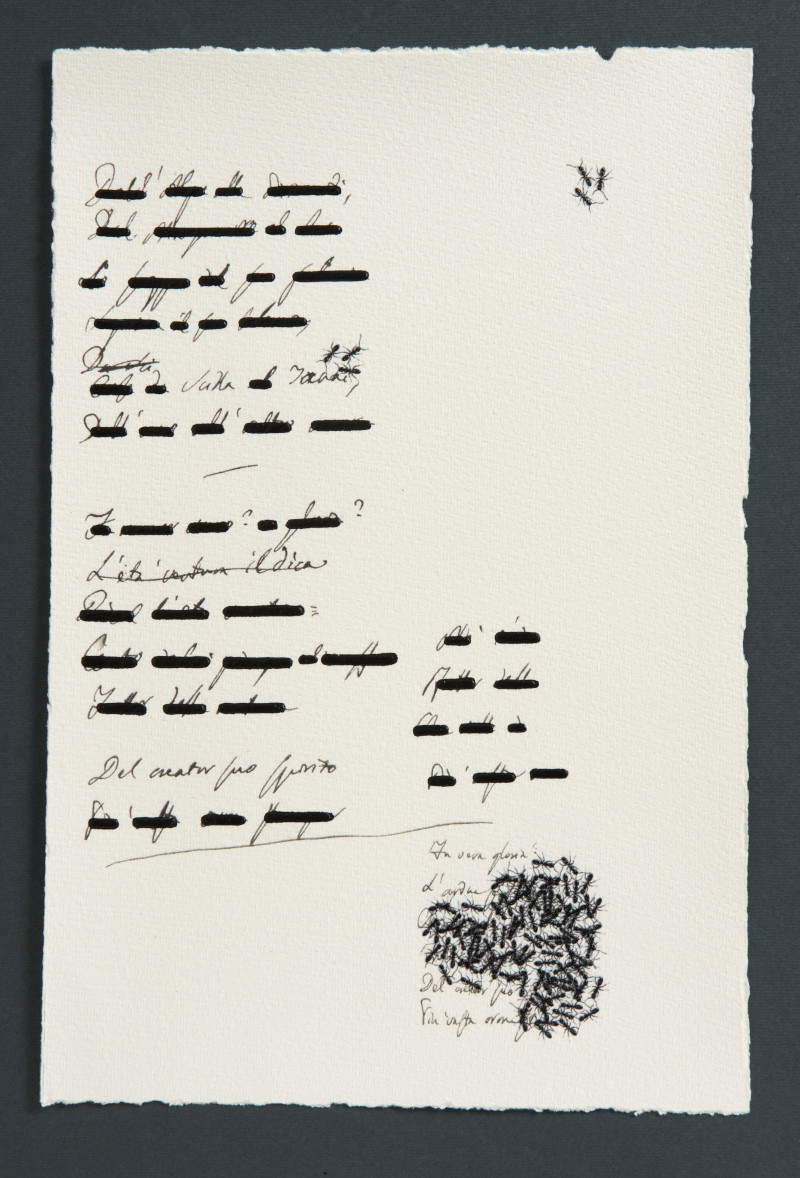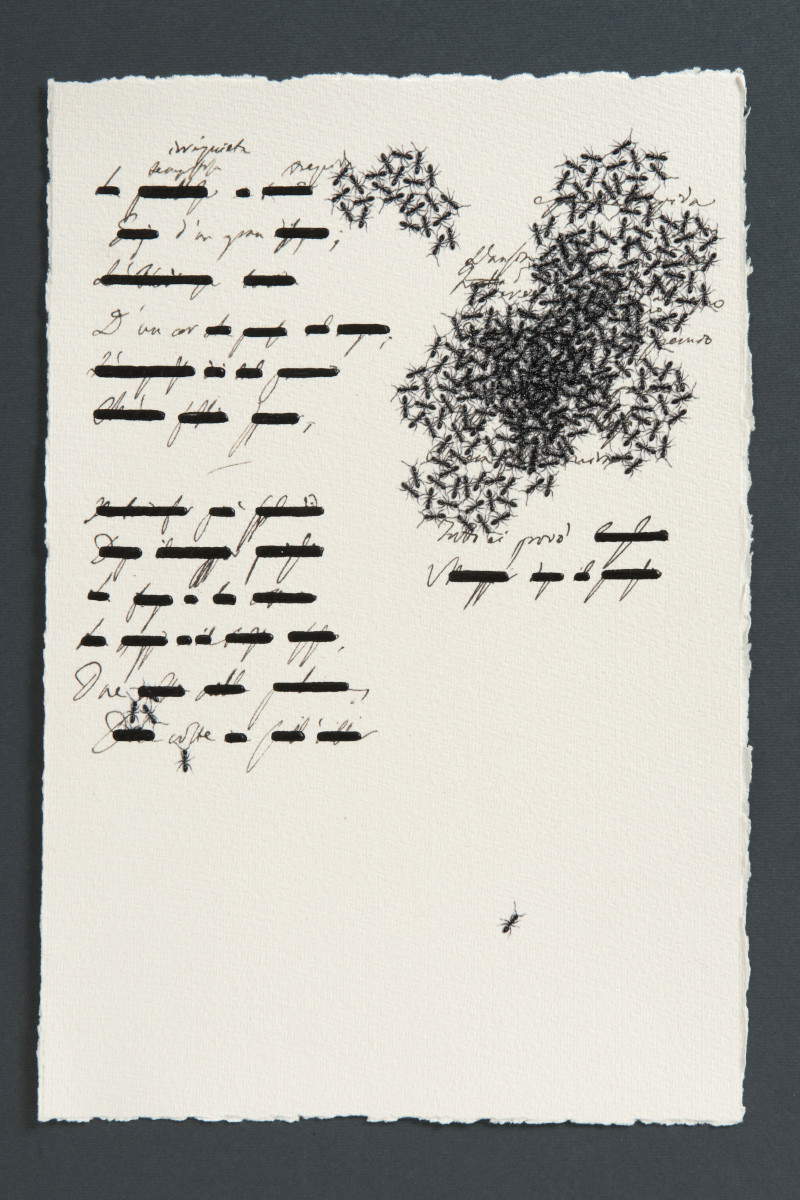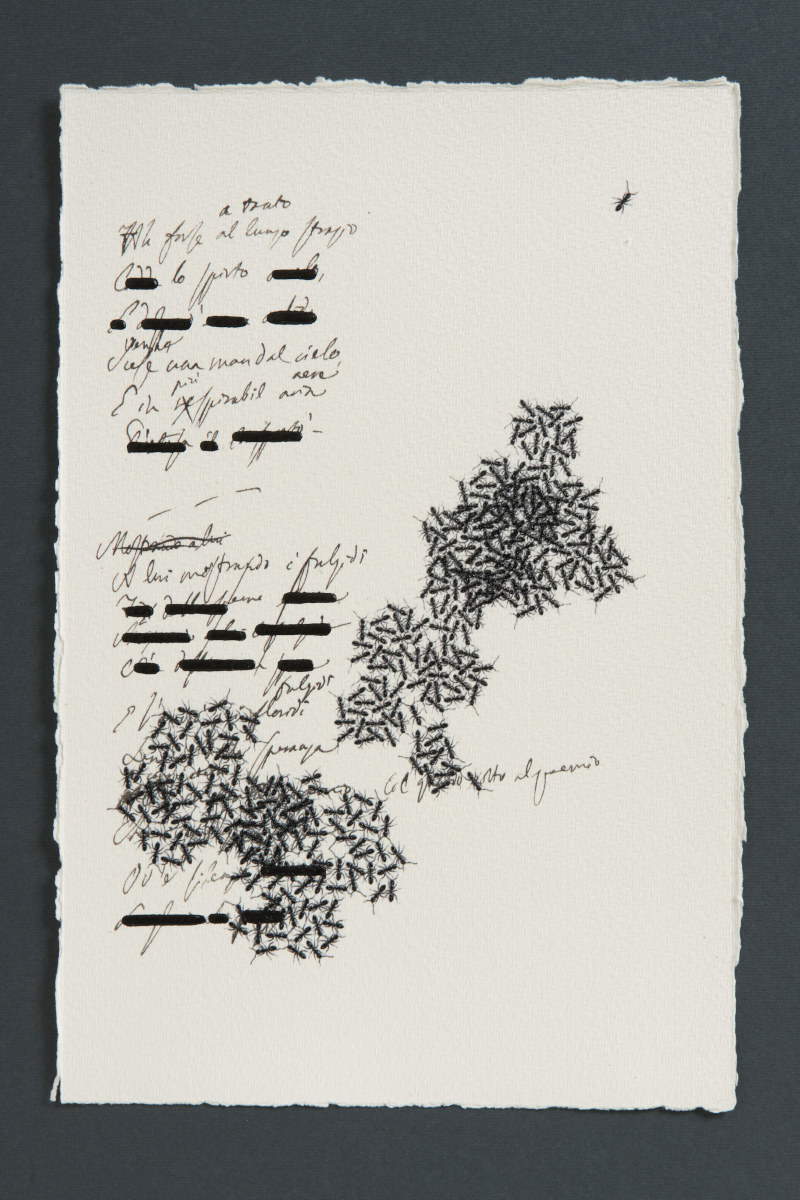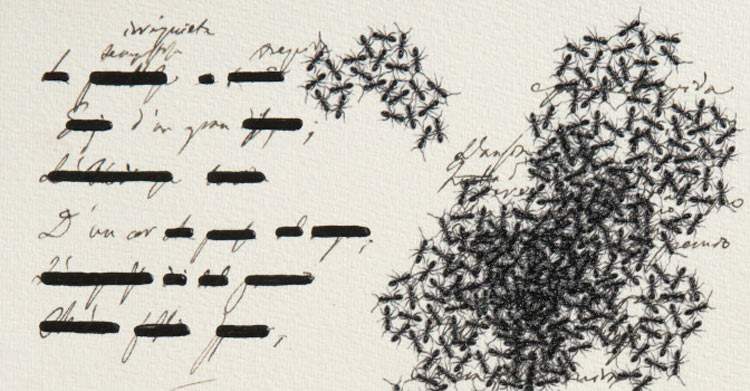Emilio Isgrò cancels Manzoni's May 5: his work donated to the Braidense
Important donation by Emilio Isgrò (Barcellona Pozzo di Gotto, 1937) to the Braidense National Library in Milan: the great Sicilian artist has in fact donated to the library his work Cinque Maggio. Minuta cancellata, a work that combines great art with great literature, memory with the present.
In fact, Emilio Isgrò has made his characteristic erasures to the autograph manuscript of the famous Manzonian poem dedicated to Napoleon, preserved in the library, one of the most famous of the Braidense, an institute that houses the most important national manuscript collection. In doing so, the artist wanted to pay a new tribute to the great writer’s poetic language. “This is the second time,” says Isgrò, “that I have tackled Manzoni’s work, and I must admit that undermining Manzoni from the throne of doubt is more difficult than emptying Napoleon of his charisma. Even for Il Cinque Maggio it could only be so. I leaned on the text just as the composer leans on the libretto, letting the words speak for themselves, which the music threatens to obliterate. It is clear that the incipit ’Ei fu’ I had to leave in its entirety, to ignite the audience’s imagination and memory.”
Braidense director James Bradburne, pleased with this prestigious gift that goes to strengthen the collection of Manzonian documents, emphasizes how “Isgrò’s work - based on the erasure of words, images and notes - has nothing to do with the ’cancellation of culture.’ On the contrary, it is manifestly its opposite. It is not a denial of the past, but a respectful celebration of it - the work of a Boccioni, not a Marinetti.” Now, Five May. Minuta cancellata by Isgrò will be on display until July 2 along with the original of Manzoni’s “Cinque Maggio” in the library’s Maria Teresa Room, which can be visited with free admission during public opening hours.



At the same time, theEmilio Isgrò Archive, as part of its valorization and study activities, is promoting the publication of the Master’s Catalogue Rationale, an indispensable tool for the restitution of the work of one of the great protagonists ofcontemporary art, the undisputed father of erasure, which to all intents and purposes is one of the most original linguistic innovations among those born in art in the mid-1960s and which is still declined by the artist in the most diverse forms. The publication will be realized under the curatorship of Bruno Corà flanked by the scientific head of the Archive Marco Bazzini and its director Scilla Velati Isgrò. The publishing project has been entrusted to Skira Editore, which in the field of catalogs raisonnés boasts a long and undisputed experience. The artist’s six decades of work will be divided into five volumes, starting from 1962, the year of his first visual experiences, with a periodization of about ten years. Each volume will consider his entire multifaceted artistic activity: from visual works to poetry, from theater to literature. Through a chronological path and an extensive introductory essay by Corà, the catalog will highlight the evolutionary moments that have characterized the artist’s language, allowing for a broader and more documented reading of the works he has created. The plates of works will be enriched by a complete apparatus of theoretical texts by the artist, which will be flanked by a rich critical anthology as well as critical-scientific reflections by a wide range of international scholars called upon to contribute an original essay to the publication. For information you can visit the artist’s website.
 |
| Emilio Isgrò cancels Manzoni's May 5: his work donated to the Braidense |
Warning: the translation into English of the original Italian article was created using automatic tools. We undertake to review all articles, but we do not guarantee the total absence of inaccuracies in the translation due to the program. You can find the original by clicking on the ITA button. If you find any mistake,please contact us.



























